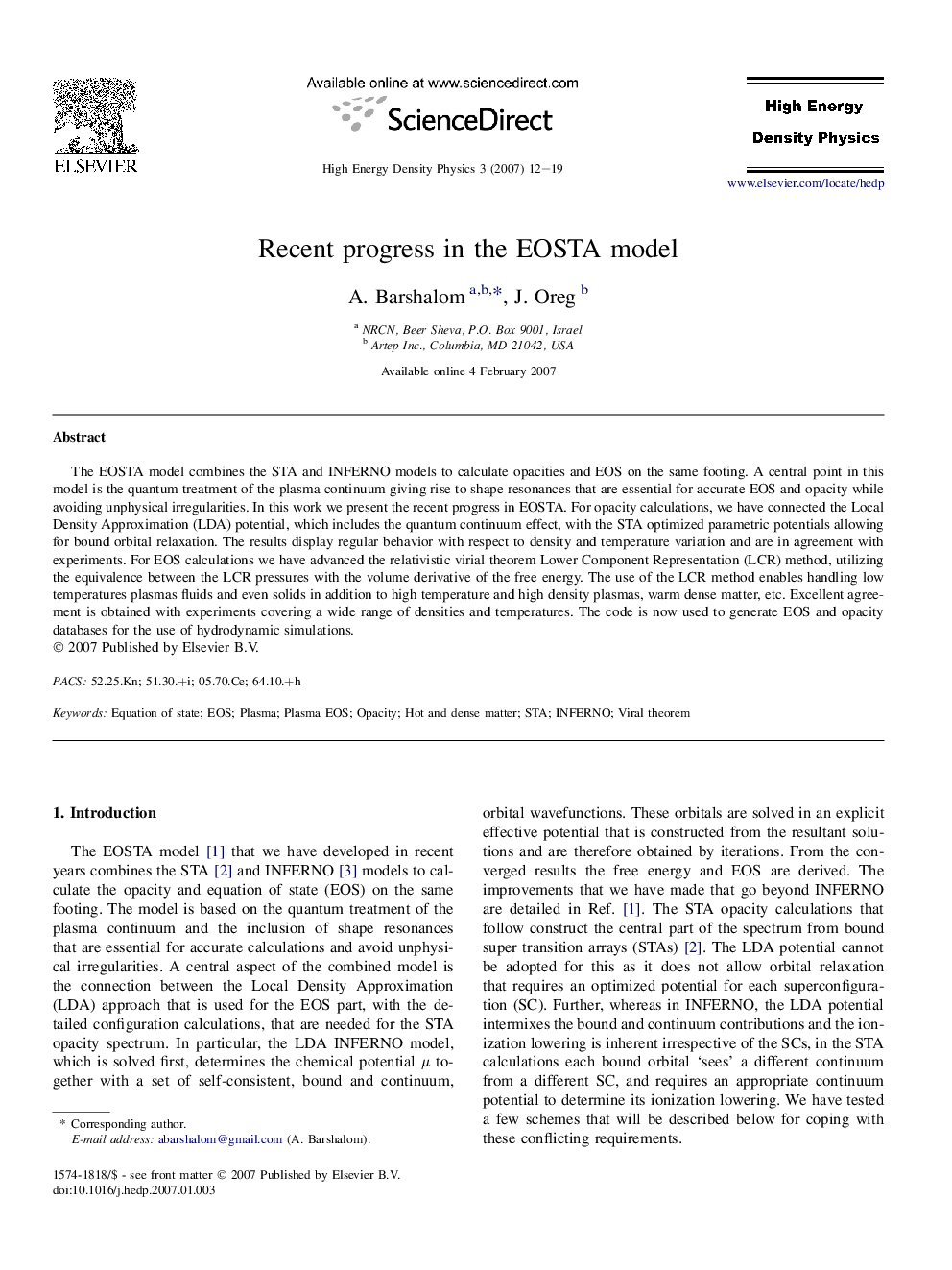| Article ID | Journal | Published Year | Pages | File Type |
|---|---|---|---|---|
| 1772834 | High Energy Density Physics | 2007 | 8 Pages |
Abstract
The EOSTA model combines the STA and INFERNO models to calculate opacities and EOS on the same footing. A central point in this model is the quantum treatment of the plasma continuum giving rise to shape resonances that are essential for accurate EOS and opacity while avoiding unphysical irregularities. In this work we present the recent progress in EOSTA. For opacity calculations, we have connected the Local Density Approximation (LDA) potential, which includes the quantum continuum effect, with the STA optimized parametric potentials allowing for bound orbital relaxation. The results display regular behavior with respect to density and temperature variation and are in agreement with experiments. For EOS calculations we have advanced the relativistic virial theorem Lower Component Representation (LCR) method, utilizing the equivalence between the LCR pressures with the volume derivative of the free energy. The use of the LCR method enables handling low temperatures plasmas fluids and even solids in addition to high temperature and high density plasmas, warm dense matter, etc. Excellent agreement is obtained with experiments covering a wide range of densities and temperatures. The code is now used to generate EOS and opacity databases for the use of hydrodynamic simulations.
Related Topics
Physical Sciences and Engineering
Physics and Astronomy
Astronomy and Astrophysics
Authors
A. Barshalom, J. Oreg,
